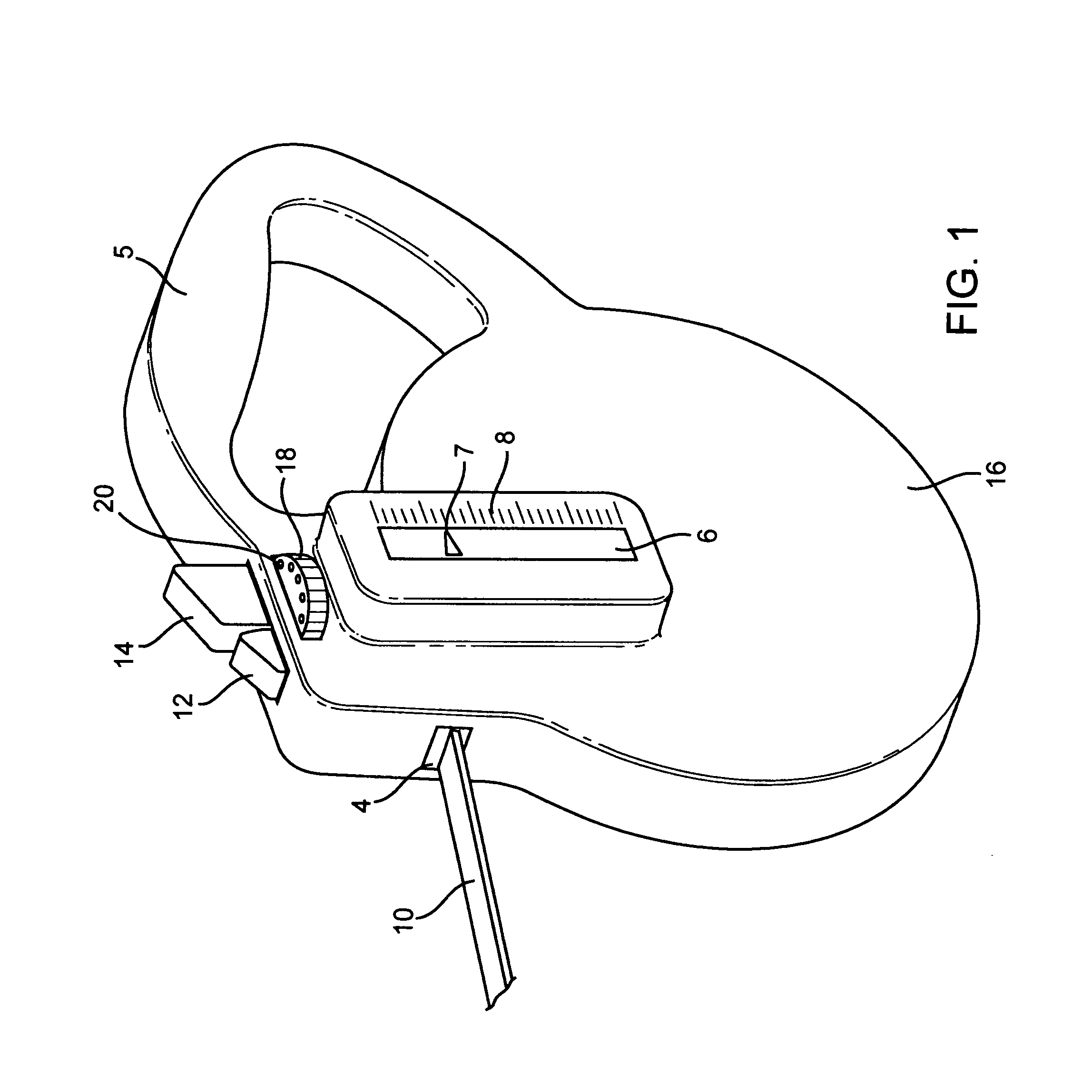Retractable Leash System
a technology of adjustable leash and leash, which is applied in the field of retractable leash adjustability system, can solve the problems of loose leash, fixed length leash, loose lead, etc., and achieve the effects of rapid and easy adaptation to specific or changing situations, rapid and convenient manufacturing, and rapid change of environment safety
- Summary
- Abstract
- Description
- Claims
- Application Information
AI Technical Summary
Benefits of technology
Problems solved by technology
Method used
Image
Examples
Embodiment Construction
[0036]The leash assembly for a leash which can be extended and retracted to walk animals, as shown in FIG. 1, comprising a housing 16 with a handle 5 to carry the leash assembly. FIG. 2 reveals housing 16 contains a spool 28 onto which the leash 10 is wound and which leaves the housing 16 through an exit opening 4. Spool 28 has a set of multiple teeth 26 and 24 located on outside with a corresponding set of teeth on the opposite side of the spool 28. On the not-shown opposite side, the positioning and orientation of the spool teeth are symmetrical and parallel to the view seen in FIG. 2. Furthermore, a brake button 14 is provided in order to block the leash spool 28 and thus form a leash part in any desired length. At its free end, the leash is provided with a not-shown connecting hook. Under the spool plug 29 is a not shown spring against whose force the spool 28 can rotate. According to this, the leash assembly corresponds to a normal mechanically retractable leash assembly and ne...
PUM
 Login to View More
Login to View More Abstract
Description
Claims
Application Information
 Login to View More
Login to View More - R&D
- Intellectual Property
- Life Sciences
- Materials
- Tech Scout
- Unparalleled Data Quality
- Higher Quality Content
- 60% Fewer Hallucinations
Browse by: Latest US Patents, China's latest patents, Technical Efficacy Thesaurus, Application Domain, Technology Topic, Popular Technical Reports.
© 2025 PatSnap. All rights reserved.Legal|Privacy policy|Modern Slavery Act Transparency Statement|Sitemap|About US| Contact US: help@patsnap.com



